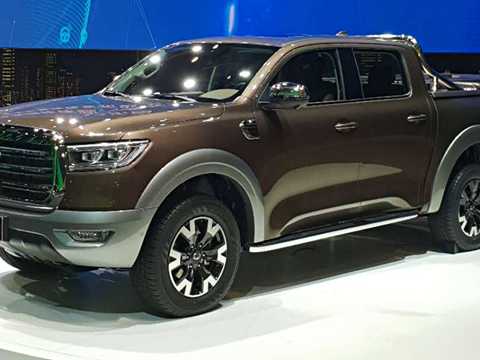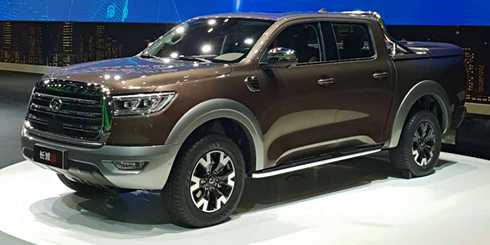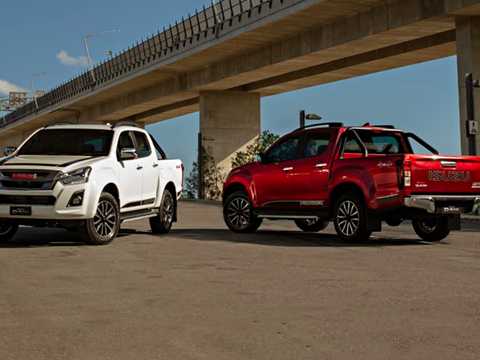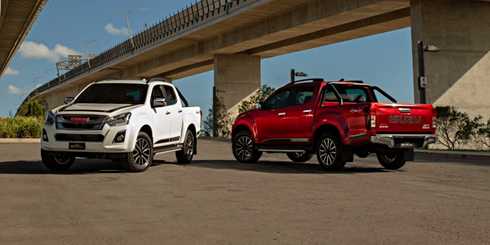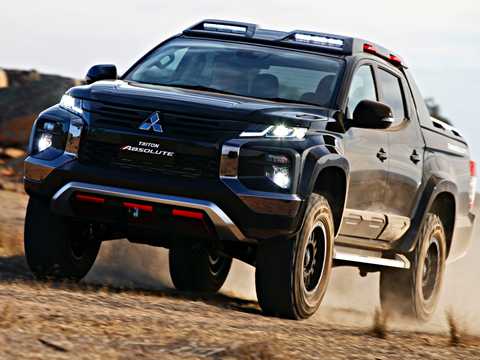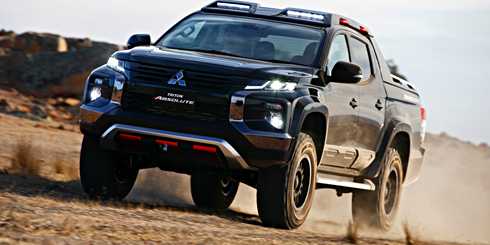Extended families always produce complications…even in the automotive industry. So when the British handed their ‘2012 Pickup Of The Year Award’ to the Australian designed and engineered Ford Ranger, it’s stable-mate the Mazda BT50 should also have received an honorable mention.
Individual design and engineering details separate the two, but the bottom line is this: the Mazda BT50 and Ford Ranger are now the benchmark one-tonne utes.
And while the CX-5 SUV captured the spotlight when Mazda announced an all-time sales record in 2012, the 11,848 sales of the Mazda BT50 shouldn’t be scoffed at. In fact, Mazda has been very savvy in pricing the BT50 – very competitively starting from $25,570 (2.2 XT Single Cab Cab Chassis)…now that’s differentiation by any measure.
Mazda BT50 Overview
Car Showroom tested the Mazda BT50 (diesel) in Dual Cab ute guise. Prices start at $36,170 (2WD) and $46,890 (4WD).
Our week in the BT50 reminded us of previous drives - this is a damn fine new ute which, like the Ford Ranger, does highlight the fact that big-selling rivals (HiLux, Navara and Triton) are at the end of the current model life-cycles. Of course Ford led the design/engineering development and has taken the Ranger to vital ute markets like South America, SE-Asia and Africa…so it had to be world-class and the Mazda BT50 enjoys the pay-back.
With handy performance, generous equipment levels and a spacious five-seat interior…well the Mazda BT50 has been winning-over both commercial and private buyers and we can see why.
Mazda BT50 Engine
Mazda’s version of the five-cylinder turbo-diesel powerplant measures 3.2-litres in capacity and runs the latest common-rail, direct-injection technology and variable-nozzle turbocharger. Its compact dimensions allowed installation closer to centre of gravity.
Performance is impressive – 147kW at 3000rpm and peak torque of 470Nm from 1750rom- 2500rpm.
Drive is via six-speed manual and automatic transmissions and Mazda claims combined cycle fuel consumption in the range of 8.4l/100kms – 9.2l/100kms.
Like other five-cylinder turbo-diesel engines, we reckon Mazda’s MZ-CD 3.2 also answers the challenge of providing extra power without the space/weight issues of a V6. And like other five-cylinders, Mazda’s version is somewhat curious in its traits – a little noisier than expected on cold-morning start-up and a little quieter than expected when running…all-up (again!) a very impressive piece of contemporary powerplant kit.
Mazda BT50 The Interior
For us, the best work of the Mazda BT50 team is inside. Climb behind the wheel and once you’ve forgotten the climb up, the feel is just like say the Mazda6 or Mazda3.
Mazda says it strove to overcome the traditional ute interior and to be honest it’s all there – the hallmark sporty driving position (a function of the relationship between seat, three-spoke steering wheel and pedals), the crisp instrumentation (twin cylinders in a sporty curved binnacle) and the compact MFD screen located in the upper part of the centre dash.
But the passenger car look goes further – to the choice of materials and stylish metallic highlights.
Audio is a single CD, six-speaker system with the usual connectivity.
Rear seat space in our dual cab model was plentiful (the leg-room is definitely one of the best in this league) and the two Car Showroom juniors and one of their mates enjoyed a trip to baseball.
Mazda BT50 Exterior & Styling
The requirement for Mazda’s stylists was to distinguish the BT50 from its Ford sibling. Whereas Ford went with a look derived from its acclaimed American F-Series trucks, Mazda equipped the BT50 with flowing curves not dissimilar to the Mazda6 sedan.
This is most obvious in the front-end treatment which sees broadly curved wheel-arches blending with modern curved headlights and the hallmark large Mazda five-point grille. Mazda provides the BT50 with a ‘chin spoiler’ at the front which lowers both aerodynamic drag (by 3.5 per-cent) and, with a nod to sportier handling, front lift (by as much as 50 per cent).
And those curves extend down the sides with prominent character lines and bulging rear wheel arches. Exterior mirrors blended into the A-pillars are the result of much research into reducing drag and wind-noise.
At the rear you do notice the cargo tray is both larger and higher than the previous Mazda BT50 and – unusual for a ute – the rear lights straddle both the cargo tray and rear three-quarter panels (Mazda says this gives a more passenger car-derived appearance).
Mazda BT50 On The Road
Until this week, we hadn’t driven the Mazda BT50 much in the city (not that we’re complaining about the launch drive program which was in the outback with trails and views which were breathtaking). So we were intrigued how the Mazda BT50 Dual Cab (at 5373mm overall length, 1850mm in width and 1815mm high, a large vehicle by any measure) would cope.
No surprise the Mazda BT50 made light work of the weekday commute – that 3.2-litre five-cylinder turbo diesel unleashes its 147kW/470Nm with aplomb (helped by nice ratios in the six-speeder) to keep you on-pace with the rest of the traffic. Sure in the CBD you are aware of the BT50’s size - especially when reverse-parking on the street - and the 12.4-metre turning circle required careful navigation of our inner-city carpark.
Flipside was of course the weekend where the Mazda BT50 quickly delivered a brand-new barbeque with space to spare (in fact we could have also stood a large cow alongside the four-burner…on second thoughts best we don’t go there). And the nice calibration of the double-wishbone front suspension and rigid rear axle made for a slick run over our high-speed mountain roads test loop.
At the end of the day we’re considering the Mazda BT50, not the MX-5, but the combination of that sporty driving position, good NVH isolation and handily balanced suspension set-up means the BT50 (and Ford Ranger) have edged ahead of major rivals for driving dynamics.
Mazda BT50 Challenges
In providing a clear contrast to the Ford Ranger, Mazda’s stylists have delivered the Mazda family styling cues in a ute which provides an overall look for the BT50 which is…erm…individual?
Mazda BT50 Verdict
Regular Car Showroom readers know we rate the Mazda BT50 and Ford Ranger as the narrow leaders in the one-tonne ute segment. Most of our media colleagues concur.
Sure there is some parochialism involved – the design and engineering work is some of the best work of Ford Australia – but drive a BT50 (or Ford Ranger) back-to-back with any rival and the evidence is irrefutable.
So the ‘seat-of-the-pants’ stuff is a ‘done-deal’ - but where Mazda has shown real nous is the specifications and pricing of the BT50. Shop BT50 models directly against rivals and the case in favour of Mazda builds quickly.
Mazda BT50 The Competition
40,646 – that’s how many HiLux models Toyota sold in 2012. In fact 2WD HiLux sales alone of 11,379 nearly matched total Mazda BT50 sales (2WD and 4WD combined) of 11,848. Ironically it was the Mazda3 small car which knocked-off the Toyota HiLux to be Australia’s best-selling individual model last year.
So the specter of the HiLux hangs over not only the BT50 but all others (Nissan Navara, Ford Ranger, Mitsubishi Triton etc) in this league.
Good as the HiLux is, and wide as its model range may be, age cannot be easily disguised and there’s no doubt the just-launch Mazda BT50 (and Ford Ranger) deliver marginally superior driving dynamics on and off-road. And in a similar way, the modern interior design lends the Mazda BT50 a much more ergonomic interior.
And the same comments apply to the Nissan Navara and Mitsubishi Triton.
Of course there has been much hullabaloo about Volkswagen’s first ute – the Amarok. Many were staggered Volkswagen opted to launch such an important vehicle into this market without an automatic transmission…and now, months down the track, with typical Volkswagen form, the auto has arrived and it’s without a shadow of doubt the most sophisticated automatic transmission the ute market has ever seen. But you’ll need $42,990 for the entry-level Amarok TDI400 Dual Cab Ute or $45,990 for the more powerful TDI420.














